Neuro-Ophthalmology Lecture 1
This is the first neuro-ophthalmology lecture for OphthoBook. This video focuses on the extraocular eye movements, cranial nerve palsies, and localizing neurologic lesions. Neuro-ophthalmology can be a painful topic for many, so I’ve broken the lecture into separate sections to minimize the torture!
The neuro lectures are longer than the rest of the videos here at OphthoBook. That’s because there is a lot of conceptual theories involved, and I wanted to slow down and walk through this material at a manageable rate. Enjoy!
Neuro-Ophthalmology Video – Part 2
This second half covers visual fields, and more specific diseases such as myasthenia gravis, optic neuropathies such as giant cell arteritis.
Screen Captures from this Video:
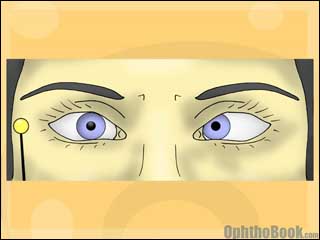
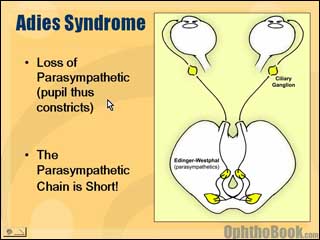
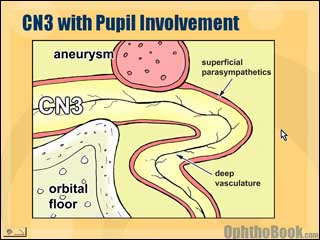
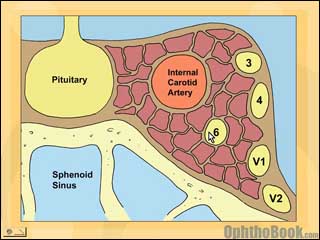
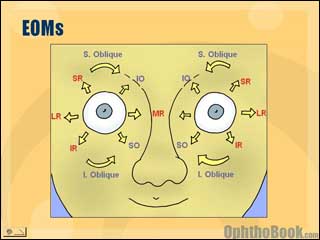
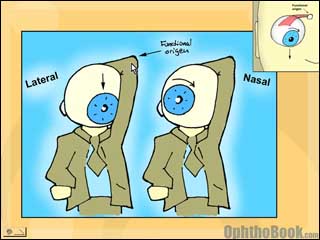
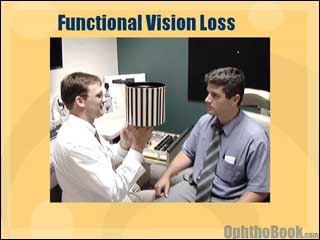
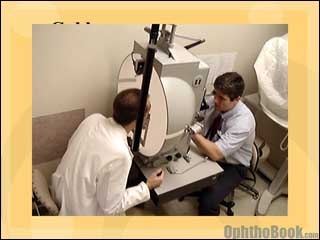
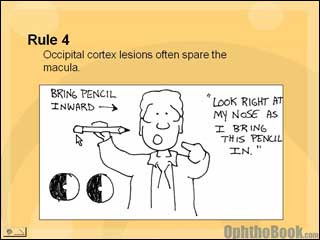
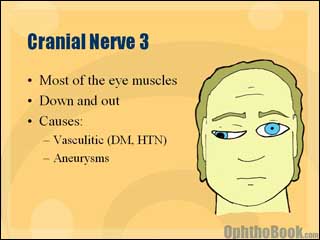
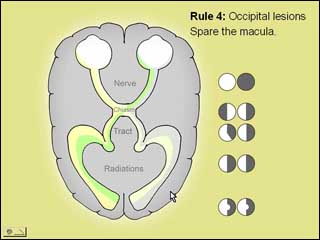
When will part 2 be available? This was a fanstatic slide show.
I haven’t posted the second part to rootatlas, yet. However, I have uploaded the second half of this lecture at Ophthobook. You can find it at this address:
http://www.ophthobook.com/videos/neuro-ophthalmology-lecture-1
Glad you liked the lecture. Neuro can be dry, so I tried to present it logically (and hopefully in an interesting format).
this is great! thanks for doing this!
Fantastic videos. Thanks. Now, could you make videos on the rest of medicine.
Thanks, thats great!! Will be using this website a lot.
exelentes videos!!! muy descriptivos…
so excellent n so simple gud job done
it is so succinct. Thank you very much for making this video.
excellent work.
Have to say dr. your really amazing!! learnt so much with so much ease from all ur videos!!
God bless u!
optom student 🙂
thanks so much for these excellent talks – you are an excellent teacher and very generous. i take my cap off to you! =)
excellent work, presentation
Thanks alot for this. Really good and simple explanations, and very good and understandable graphics.
This will help me for my clinic exam in optometry today!
Where is link for video to play?? This topic will not play as others do.
Fantastic demo
i was diagnosed with 6th nerve palsy after being in a car accident it was a month before i had a carotid carvenious fitsula embolizatiom. my carotid artery was bleeding back into a vein they put platinum coilsprings to stop the bleeding. before the surgery my eye would only travel somewhat midline after surgery my eye traveled out a little further past midline i was told that the 6th nerve was damaged i want to know if this nerve heals itself on its own over time.how long what can i do to help the process and does smoking affect the healing process. my eyes go in all directions but one that doest go all the way to the right movement of my face is fine i can feel all sensations. double vision when i look to the right my right eye stops moving a little passed the mid line.like i said before the surgery of the fitsula in my artery the eye barely moved after the procedure moved a little further will my eye ever be normal again.
please send me an answer to my dilema
man u did wrote an awesome stuff… i really love it… made ma concepts all clear in a jiffy..
do inform me if u hv uploaded similar stuff…
peace..
THANKS,,,,4ALL
I liked so much your way in lecturing , you make it easy .. so thank u so much
really I find no words to thank u ….
Hi
Thanks for your great work. It is really helpful and wonderful tools for every medical students for learning ophthalmology..
i can’t help but comment AGAIN & AGAIN that this is outstanding work ! i will recommend this to the med students who pass by ophthalmology, i am sure they’ll deeply appreciate it.
many thanks
Great lectures..it really helped me with my ophtho test n neuro is specially great but Dr please can you explain the visual pathway defects a bit more tht would be gr8 cos u c the hemianopias r really confusing as in what lesion will cause wat defect n which side will be affected. Again awesome teacher and lectures keep up the good work. I’ll be waiting for more lectures 🙂
Thanks so much, I can finally understand. your style of teaching is wonderful, you have a talent for teaching, thanks
The way of presentation is very attractive ,I liked too much, Thanks alot .
So, the pupil constricts? (with Adie’s)
Your book and videos are terrific. Thank you!
excelent simple way to understand a few hard concepts…. thanks
A work of genius!!!Thanx a million!!
many thanks for your efforts…excellent work
great lecture!!i hardly open my textbook for my end of posting exam! ophtal will never be boring again…
Great and easy explanations of a difficult topic. Thanks
Thank you so much, You are a great teacher.
Mexico
This is one of the best pages I ever seen. Wonderful work. congratulations. Mexico
ammmaaazzzzing! thankx 4 understanding us….as these videos can be compared to blessings 4 us!
I absolutely love this! So much easier- and u make it much more enjoyable and less scary too : )
Thanks a million!!
superb
thanx …. really thank u for ur work ……. great lectures from great doctors …. i hope that these lectures help me in my course
One of the Best websites i have ever seen in ophthalmology
Waiting for more >>>>>
Just amazing… thank u. it makes me feel so much better when u say u had trouble with certain topics, cos i had trouble with the same ones! thank u for sharing ur great teaching skills with me!
I am medical student,first year and ur viedo’s help me alooooooooot,ur amazing Dr.
Thank you alot,and keep up the good work
I am medical student,first year and ur viedo’s helpd me alooooooooot,ur amazing Dr.
Thank you alot,and keep up the good work
Excellent. Very well explained! Thank you.
thank nd waiting for second lecture
I’m actually a student optometrist from the UK. The videos on this website are excellent, especially the lectures, very well explained!..Hopefully more to come on other topics! Many thanks! Is the second half on root atlas yet btw?
Hello, I’m an orthoptist, I really liked the presentations and the explication, so easy, doesn’t make it difficult at all, I wish I had a professor as you sir 🙂
Thanks so much, keep it up, I encourage u to do more for the science…
Hello Sir,
Can you please clarify about the actions of Superior & Inferior Recti muscles ? Books say that they are adductors of the eye.In what position of gaze do they act as adductors ?
Hi, I found the video very helpful in understanding of my condition. I am currently suffering from 4th nerve palsy following a head trauma 12 weeks ago, have binocular diplopia and using a prism lens in my glasses whilst waiting and hoping for improvement. Any suggestions or tips to speed up my recovery would be very helpful!
Many thanks, Ian.
Very Efficient. Thankyou
thankkkkkkkks… u help me alot
so helpful! Thank you!
Thank u sooooooooooooooooo much!
Very very helpful 🙂
Great job! You are an excellent teacher.You have an innate ability to simplify some very difficult topics. I am waiting for you to cover some more topics.
wow!!!!!!!!!!!!!!!u’r d best!txs alot.. God bless u:)
thanks that was helpful and easy…never thought that neuro-ophthalmology is so easy…
god bless u
Thanks so much!
I am a Taiwanese medical student who is interested in
Ophthalmology but found difficulty always in understanding
it~
Your lectures helps a lot, really!
And made me even more interested in Ophthalmology~
Million thanks to you! and Ophthobook!
very clear & nice lecture!
simply superb.looking forward for more.shall visit the site very often to learn and get enriched.thank you once again
DEAR DR.:
THANKS A LOT FOR YOUR AMAZING WAY
IN PRESENTING LECTURES..I’VE TOLD EVERY OPHTHALMOLOGIST,STUDENT AND BEGINNERS ABOUT THIS GREAT WEBSITE..
AS LONG AS IT HELPED ME,I WANT OTHERS TO BE HELPED TOO..
WHAT IF YOU PRESENT STRABISMUS LECTURE THE SAME WAY??
AS THIS TOPIC STILL SOMEHOW DIFFICULT FOR BEGINNERS..
I’LL BE REALLY THANKFUL 🙂
awsume………. great job.
i start loving da dull eye subject
that was so practical, thank you.
Thank you very much for being so helpful!Keep up on excellent work!
Thank you very much sir…but nowadays i am not able to play video what should i do?? PLZ guide me.
very useful and to the point. will definately recommend this site to colleagues. keep up the good work
You said at start of 23rd Minute of part 1 that the Loss of hearing with horizontal diplopia 6th and 7th nerve palsy but the hearing is with 8th cranial nerve.
very good chapter….only a couple of very minor mistakes – in Adies, pupils should be dilated (not constricted as it says on slide – granted in old cases it can present as constricted pupil)
thank you verey much, this is the most simplified and benificial lectures i have ever seen
thank you very much doctor.
now everything much more clearer to me.
wish u the best
Thanks …
Great job..
love the way you present the lecures in simplified manner…is it possible that you can show how the goldmann perimetry works..
Great success !!!
Hi Dr Tim,
You’re amazing, these videos are tops. You’ll be happy to know you have quite a following among med students in sunny Queensland Australia.
Just noticed ? small typo at 24.30 neuro video 2 (Adie’s syndrome). PSNS constricts so with Adie’s pupil should dilate – not quite clear on the slide but you’re talking about dilated pupils so I’m sure anyone who’s listening would get your drift (probably just a good way to check we’re still thinking, eh?)
Thank you so much for your hard work. You’ve put together a great resource.
Cheers,
Helen
Hey these videos are great!
you are an amazing techer
picked up a little error in the 2nd neuro video
the slide on Adie’s pupil says that the pupil would be constricted when it should say it would be dilated. It is however correctly described in the audio.
Thanks for these videos
sorry just realized helen pointed it out already
This Video is very very nice.Would you serve me to downloa for accademic purpose freely,please.
Hi, thanks very much!
Hi, thanks very much!
Very easy to learn
Excellent Presentation I have ever seen.Thankyou so much for such a beautiful interesting presentation
Please keep posted more
Ridiculously helpful talk and great animations. Clarified a lot of pts I was wondering. Thanks from UNSW (Sydney)
GOOD WORK BUDDIES
HELPED A BIT
WOOOHOOO !!!
Its really helped alot thanks
please give me this vedio
It’s really helpfull man, i cant thank you enough for this!!!
greets from Holland
Really really very interesting & useful presentation.. thnx alot doctor
very nice ,clear and helpful ,thanks again.
Can’t thank you enough 🙂
dear sir,
every person who watches your videos will be so thankful to you .. and all those good wishes will definitely transform into blessings for you:)
I am preparing for MRCP(UK) PACES and I was really stressing out about the eye part of this clinical exam. Having watched your videos, I now feel much more in control – thank you very very much! I am yet to come across a better website that explains eye concepts in such an easy-to-understand way.
Good job, very clear
Amazing .. thaaaanks alot !!
Thank you so much!! You’re such an effective teacher!
Thank you for the beautiful presentation, looking forward for more….
regards…
You are my ophthalmology hero!!! Thanks you!
Again, recti are adductors not abductors. But good video!
Also loss of hearing should be CN VIII, no?
Thank you verrrrrrrrrrrrrrrrrrrrrrrr…y mucht you are wonderfull
Thanks!!! I never thought I would understand this!
thanks alot
Your lectures have helped me out immensely . Thank you
Thank You sir For These Great Videos . Our Doctor Recommended This site as an Official Source To study From It & Its Really Great and Beneficial .
I have a question about the hearing loss and the nerve palsy. You state that the 7th nerve is responsible for hearing but I believe that the 7th nerve is responsible mostly for facial control. If you had a case of horizontal diplopia and loss of hearing wouldn’t that more likely be more the 6th and 8th nerve. I am rusty on my anatomy but I was curious if the lesion would more likely be located near the petrous portion of the temporal bone or near the internal acoustic foramen where the two come close together? Or would that still most likely occur in the pons and if so would you expect the 7th nerve to also be affected?
By the way, great videos! Your material is phenomenal. Keep them up
just amazing
Greetings from South Africa!
These videos are very useful and helpful! I used this as my final prep for my end year opthalmology exams!
Thank you!
Hi,Dr.Tim.Thank you for the videos.İt was verry Efficient . Dr.Mehin Heyet.General Ophthalmologist.
These wr really helpful fo in gettn my concepts cleard doctr…thnks
HI im a medical student , you had done the fantestic jobs . thanku very much for providing this GOD bless you
extremely useful, thank u thank u thank u =)
Thanks for the videos. They’re always wonderful.
The SR and IR have their elevation/depression function, but they’re used primarily more independently when the eye is anatomically more temporally. I think this was the point trying to be conveyed.
However, as mentioned by another comment, the true physiology I always remember:
Superiors=Intorsion, Inferiors=Extorsion, Recti=Adduct, Oblique=Abduct
shiit you just blew my mind. awesome stuff.
I begin my residency in ophthalmology and i wish you were my consultant ophthalmologist.
Thank you very much for your lecture!!!!
I’ve gone through all the videos.
They are:
succinct, yet comprehensive,
very informative,
well narrated, and well organized.
The author’s effort in creating this collection is very much commendable. I would like to thank him for educating us in such a simple yet sophisticated way.
Dr Tim
You are the BEST…
Dr H K Arora(Glaucoma Specialist)
I’ll never be able to thank you enough…
you are an amazing person
thanks for all of your efforts
God bless you
Dr. Tim…you awesome! I am very appreciative that you are sharing your passions for Ophthalmology and teaching in this way with the world. Your website has been extremely user friendly and your style of teaching helps the intricacies of the eye easier to understand.
JOB WELL DONE!
Great lecture. Outstanding.
never thought neuro-opthalmology can make me smile.
Ram
Hospital Sultanah Bahiyah
Alor Setar
Malaysia
awesome lecture. thank you
i really love it .but content of lectures are very much minimal. please include more content .thanks for your great work siiiiiiir
I love your video! thank you! 🙂
Great stuff, many thanks for giving this all for free. Small point which may be me misunderstanding but: in Adies syndrome the pupil dilates due to loss of parasympathetic force.
Thank you very much for the videos. U make everything so clear.can,t thank u enough !
You make it easier and more clear! God bless you doctor! ❤️
omg. Such an amazing website!!! I wish I found it earlier at the start of my ophthalmology training!!!! It would have make life so much more easier for me! Thanks for the amazing work!!
Thanku so much … Make more of these 🙂
excellent job,you are a great teacher no doubt
Nice Work Simple Way Of Teaching……
THANKS A LOT FOR THIS GREAT WORK !
I’m starting my ophthalmology residency in Israel in less than a month. I gotta say that what often bugged me was the fact that ophthalmologists when they teach they often seem to forget what it was like when all this stuff was not so obvious and basic that no explanation is really needed… Well it’s not obvious at all! Actually very new and confusing and takes time to sink in. So thank you very much for these great explanations of the basic stuff! You’re an awesome teacher exactly because you teach as if you remember what it was like back in the time when this stuff was really confusing and often didn’t make sence …
Helped me a lot I’m now ready for the AAO books 😉
remarkable! thanks for doing this
A man with a vision of Clarity & Simplicity ! Superb Doctor ! Thank you
I love you love you so much sir thanks thanks alotttt please upload more videos 🙂
excellent adding vedios digs information in our brain
thanks very much
we wait for more
go on
Thanks so much for these lectures – so great. The only thing I would like to add is that in the beginning of the lecture you state that the inferior oblique is an intorter, when in fact it is used for extorsion.
Thank you .. Extremely useful .
Thanks for these wonderful lectures. I’m wondering: How do you differentiate a tropia from a cranial nerve palsy?
I WOULD JUST LIKE TO SAY THAT FOR SUCH A YOUNG GENTLEMAN YOU ARE EXTREMELY SMART. PEOPLE AROUND THAT AGE STILL TEND TO NOT KNOW WHAT TO DO WITH THEIR LIFE. YOUR VIDEOS ARE A BLESSING TO ME. I WORK FOR A DOCTOR AND HE ALWAYS TALKS IN JIBBERISH BUT WHEN HE SAYS “LOOK IT UP” I LOOK ON YOUR WEBSITE. YOU HAVE TAUGHT ME MORE THAN ANYONE HAS IN MY ENTIRE LIFE AND I GREATLY APPRECIATE IT. I CAN’T WAIT TO BE AN OPTOMETRIST ONE DAY. I’M ALREADY IN THE FIELD AND I HAVEN’T EVEN STARTED COLLEGE FOR IT YET. THANK YOU SO VERY MUCH.
I really enjoyed your videos on eye neuro anatomy, especially the part about superior oblique palsy – I realised I had this when I was in first year of medical school, likely a congenital weakness. I had surgery to correct it by weakening the ipsilateral inferior oblique (the opposing muscle) and now am luckily no longer tired after reading just a couple of pages – very useful as a medical student! Horizontal gaze is perfect now, just a little weak looking up in the extreme. Exactly as you described, I had vertical nasal horizontal gaze and also noticed I turned my head (affected side towards camera) in photos and read with the same tilted head. Thank you for the free open access meducation videos!
Wonderful and easy to follow presentations! Thanks lots!
Amazing videos! Easy to understand. Thank you for allowing access to all your videos and notes.
This is like cracking the da vinci code! Thank you so much
Great work. Thanks alot!
Great